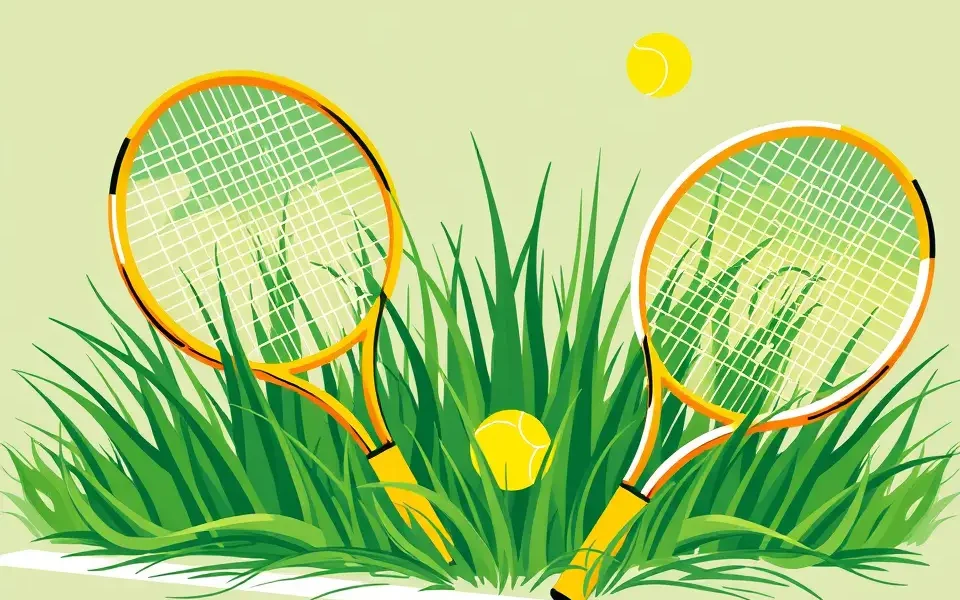The grass court season is upon us, and with it comes a fresh perspective on how tennis is presented and experienced. Several exciting changes are set to enhance the visibility and appeal of grass court tennis, particularly in Britain, leading up to the prestigious Wimbledon Championships. Here’s what fans and players can anticipate in this revamped season.
Highlighting Women’s Tennis
A significant emphasis is being placed on promoting women’s tennis to a broader audience. The Lawn Tennis Association (LTA), in consultation with the All England Club, has been reviewing the grass court season for the past two years with the intention of improving the experience for fans and players. A key outcome of this review is to raise the profile and visibility of women’s tennis, ensuring more opportunities for fans to watch the sport live and on television.
Return of WTA Event to Queen’s Club
For the first time in over 50 years, London will host a high-profile WTA 500 event at the Queen’s Club. This marks a pivotal moment, offering increased exposure and interest in women’s tennis right from the start of the grass court season. The temporary infrastructure used for the event will remain in place for two weeks, maximizing the investment and providing an excellent playing surface.
Equal Opportunities at Every Venue
A commitment has been made to ensure that every tournament venue will host both men’s and women’s tennis events. This means more chances for fans to watch British players in action closer to them, fostering local engagement and support.
2025 Grass Court Season Calendar
The 2025 grass court season will feature several combined and individual events across different venues:
Launch in Birmingham
The season kicks off with a combined challenger-level event at the Edgbaston Priory Club in Birmingham during the week of June 2nd. This historic event marks the first male and female combined tournament in professional tennis in Birmingham.
London and Ilkley Events
The week of June 9th will see the return of the WTA 500 event to London at the Queen’s Club, alongside the traditional combined challenger-level event in Ilkley.
Nottingham and Queen’s
During the week of June 16th, Queen’s will host its popular men’s ATP 500 tournament, while the Lexus Nottingham Tennis Centre will host a women’s WTA 250 event and a men’s ATP 125 Challenger event.
Eastbourne Finale
The final week leading up to The Championships will feature a combined women’s and men’s WTA/ATP 250 event at Devonshire Park in Eastbourne.
Strategic Objectives
The changes to the 2025 grass court schedule are designed to achieve several strategic objectives:
Maximizing Visibility
Starting the season with high-profile events ensures maximum visibility for tennis, drawing in larger audiences and media attention.
Promoting Women’s Tennis
The revamped calendar aims to promote women’s tennis to a larger audience, raising its profile and inspiring the next generation of female players.
Protecting Geographical Spread
The LTA is committed to protecting the geographical spread of grass court venues, ensuring that fans across Britain have the opportunity to watch world-class tennis.
What Makes Grass Court Tennis Unique?
Grass court tennis holds a special place in the sport’s history, offering a unique playing experience compared to other surfaces like clay or hard courts. Modern tennis was invented in the late 1800s in England and played on grass courts. Wimbledon, the oldest and most historic of the four Grand Slams, was staged for the first time in 1877 at the All England Lawn Tennis and Croquet Club. For many, it remains the purest, most traditional form of the modern game.
Lower and Irregular Bounce
The soft, natural surface of grass yields a lower bounce, which can neutralize the effects of high-kicking topspin. Irregular bounces can disrupt a baseliner’s rhythm and precision, demanding more delicate footwork as players navigate the court.
Aggressive Game Style
The potential for awkward bounces rewards an aggressive game style that creates shorter points. Players with big serves, flat groundstrokes, and net skills often thrive on grass.
Surface Wear
The natural surface wears down with each match, altering the conditions as each day passes. Managing these variables is crucial, especially after the clay season, as players adapt to the faster, slicker surface.
Key Players and Tournament Expectations
As the grass season unfolds, anticipation builds around which players will excel on this unique surface. The transition from clay to grass requires adaptability, and players who can quickly adjust their strategies often find success.
Ones to Watch
Several top players have historically performed well on grass, including those with strong serves and aggressive net play. Keep an eye on players like:
Novak Djokovic: Known for his exceptional all-around game, Djokovic’s precision and adaptability make him a perennial favorite on grass.
Roger Federer: With a record number of Wimbledon titles, Federer’s graceful style and attacking prowess have made him a dominant force on grass. (Note: While Federer has retired, his legacy continues to inspire.)
Serena Williams: Her powerful serve and aggressive baseline game have led to multiple Wimbledon championships. (Note: While Williams has also retired, her impact remains significant.)
Iga Swiatek: The world No. 1 is set to begin her grass season in Berlin.
Naomi Osaka & Bianca Andreescu: They are scheduled to start their grass-court season in ‘s-Hertogenbosch
Tournament Dynamics
The grass season is a sprint, with just a few weeks to gain momentum before Wimbledon. Players often prioritize getting as many matches and practice sessions as possible to acclimate to the surface. The short season intensifies the competition, making every tournament crucial.
Impact and Future Prospects
The changes to the grass court season in 2025 are expected to have a significant impact on the sport in Britain and beyond. By increasing the visibility of women’s tennis, promoting local engagement, and enhancing the overall fan experience, these initiatives aim to secure a bright future for grass court tennis.
Growing Interest
The introduction of a high-profile women’s event in London is set to kickstart interest in tennis at the beginning of the grass court season. This increased exposure will provide more opportunities to inspire the next generation of players and fans.
Economic Benefits
Hosting more combined events and extending the use of temporary infrastructure will boost local economies and create more sustainable tournament models.
Global Influence
The success of these changes could influence other tennis associations to adopt similar strategies, further enhancing the profile and accessibility of grass court tennis worldwide.
Conclusion
The new look grass court season promises to be an exciting chapter for tennis. With a focus on promoting women’s tennis, enhancing the fan experience, and strategically scheduling key events, the 2025 season is set to captivate audiences and inspire a new wave of tennis enthusiasts. As the first serves are struck and the Wimbledon Championships draw near, the tennis world eagerly anticipates the unfolding of this revitalized grass court season.








No Comment! Be the first one.